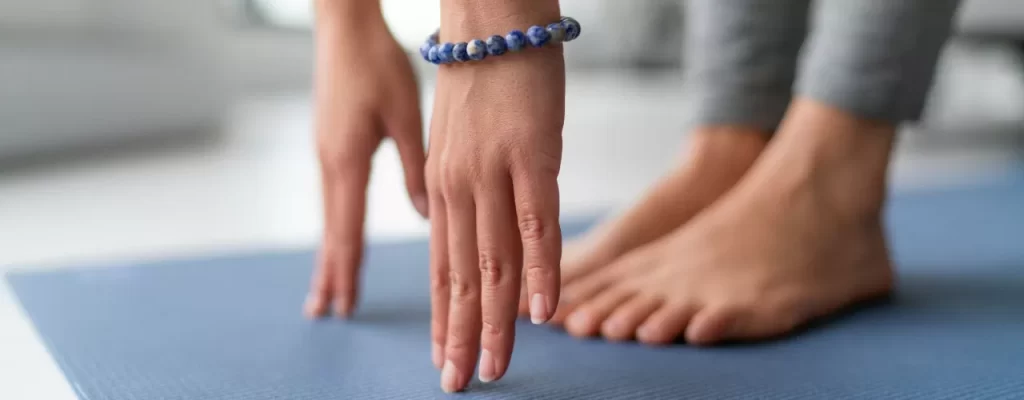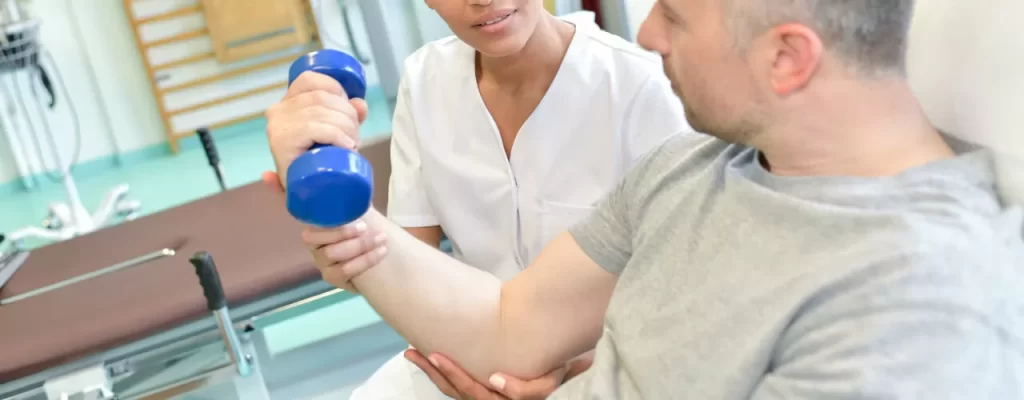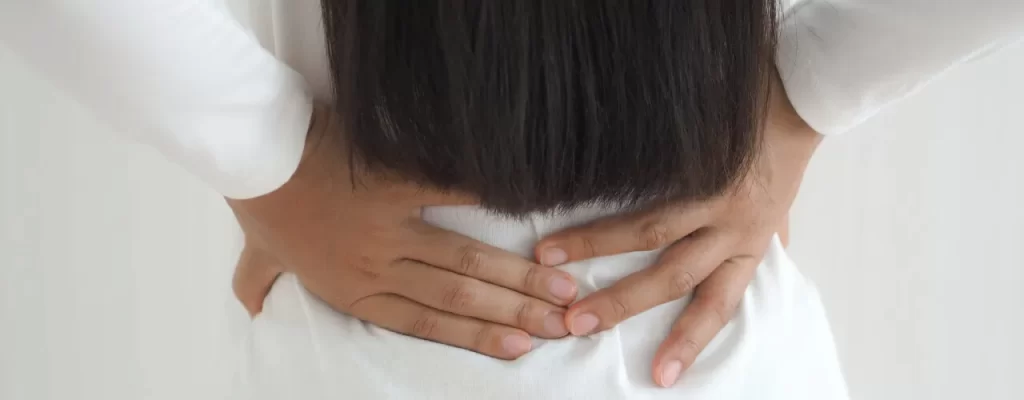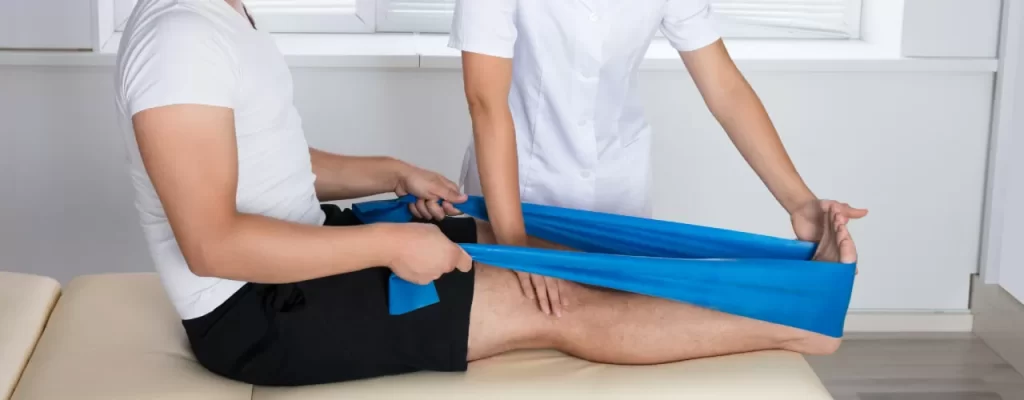Aches and Pains Zapping Morning Energy? PT is the Solution!

Aches and Pains Keeping You From Enjoying Your Mornings? Physical Therapy Can Help! Let’s face it, some of us just aren’t morning people. The reason for that varies — sometimes you just want a little extra shut-eye, and other times, it’s because morning presents aches and pains to you that you’d rather avoid. Do you leap out of bed excited at the thought of experiencing another morning – or do you just lie there, afraid to move because of the pain you’re likely to feel? Aches and pains are never welcome, and they can start your day off with low spirits when you’re forced to deal with them from your first waking moments. The good news is you don’t have to keep waking up in pain. Physical therapy can help you to understand why your discomforts are happening and how you can put a stop to them through safe, drug-free methods! Our innovative care strategies at Chesterton Physical Therapy will help you find quick relief. Inflammation and morning pain If you suffer from generalized aches and pains when you wake up in the morning, you’re not alone. Our bodies build up inflammation in the tissues throughout the day. This can be extremely subtle and you may not notice it, even by the end of the day. However, when we lie down and go to sleep, the inflammation can thicken and settle into your muscles. This in turn immobilizes your joints and can lead to aches and pains when you wake up. That same process repeats, day after day, and the pain gets worse. Eventually, chronic pain can set in if you do not make any lifestyle changes to correct the problem. This is why it is a great idea to contact our office for a consultation, before the pain leads to more serious health problems. “Is it my mattress?” Sometimes the answer to morning pain lies in your mattress — literally. According to Spine Health, “Sleeping on the wrong mattress can cause or worsen lower back pain. Lack of support from a mattress reinforces poor sleeping posture, strains muscles, and does not help keep the spine in alignment, all of which contribute to low back pain. Quality of sleep is sacrificed if a mattress does not match one’s individual preferences. A mattress that provides both comfort and back support can help to reduce low back pain and allow the structures in the spine to rejuvenate during the night. While the Better Sleep Council recommends replacing your mattress every 7 to 10 years, the way you feel in the morning is a better indicator that it’s time to replace your sleep surface. If your mattress was once comfortable but now seems to be at the root of your aches and pains, it may be time to replace it. Physical changes like injuries, surgery, and weight change can also change your body’s position as you sleep, necessitating a need to start browsing for a new mattress much sooner! Why does this part of my body hurt in the morning? Each area of the body is vulnerable to pain in its own way. A few common areas people report feeling pain are as follows: Neck pain. Have you ever felt like someone tried to twist your head right off during the night? The problem may be that you may have the wrong kind of pillow for your individual needs! Incorrect head and neck support can leave you with agonizing stiffness. Try a new pillow. Back pain. Back pain is very common and can often be the result of a poor mattress, an injury, bad posture during the day, or several other conditions. Pain can afflict any part of your back first thing in the morning. If you can barely move in the morning or never get quite comfortable at night, it’s time to take a look at your mattress and daily movement habits. Jaw pain. Does your jaw feel stiff and achy when you wake up in the morning? You may be grinding your teeth or clenching your jaw as you sleep, a problem known as bruxism. This habit is associated with emotional and physical stress. Hip pain. If the pain you experience in the morning feels like it’s on the outside of the hip and bothers you more at night, bursitis may be the culprit. If you experience hip pain that feels like it’s coming from within the joint and is at its worst upon awakening, suspect osteoarthritis. Heel pain. Do you dread getting out of bed in the morning because of the pain you know you’ll feel once your feet hit the floor? If taking those first steps in the morning is torture for your heels, but the pain then recedes as you walk around, you probably have a chronic inflammation of the arches called plantar fasciitis. How can physical therapy help me? Some people feel achy when they wake up, some feel achy when they go to sleep. Morning pain and overnight pain are closely related. Issues such as chronic lower back pain may nudge you into wakefulness many times each night, creating a twinge of pain with the tiniest body movement. By the time you have to get up in the morning, you might feel even more pain than you did when you went to bed, which can often make you want to crawl right back under the covers and go back to sleep. Thankfully, there’s a solution to your pain: physical therapy. An experienced physical therapist will know how to evaluate your symptoms in detail, see how they correspond to your sleep quality (or lack thereof), and identify the underlying causes. From there, your therapist can begin the creation of a physical therapy program aimed at eliminating or controlling the causes of your pain. For instance, they might determine that your back needs a firmer or softer mattress, or that your neck could benefit from a contoured cervical pillow. Other physical therapy treatment modalities can help you strengthen your back, tame bursitis, relieve plantar fasciitis, or control osteoarthritis symptoms. Are
Discover 5 Powerful Reasons to Make Stretching a Habit!

Are You Stretching Frequently? If Not, Here’s 5 Reasons Why You Should! Improve Your Health and Wellness by Stretching! Have you ever noticed how good stretching feels after a nap, when you first wake up in the morning, or after vigorous physical activity? That good feeling just scratches the surface with the many healthy benefits you can get from regular stretching. Our innovative care strategies at Chesterton Physical Therapy will help you find quick relief. That’s why our physical therapist commonly recommends specific types of stretching exercises to complement other physical therapy modalities. Why stretching is a big part of PT Since stretching exercises offer so many important benefits, it’s not hard to see why we use them all the time in physical therapy. Physical therapy can combine targeted stretches with strength building exercises, massage therapy, ultrasound therapy, heat or cold therapy, and many other techniques to help you feel better and stay healthy. We can also make sure you are doing the right stretches for your needs and show you how to perform them safely. Below are five ways you can improve your health, comfort and function by simply stretching! 1. Stress relief Emotional stress can often turn into physical stress in the form of muscle tension, sleep problems, and suppressed immune function. In other words, it can make you sick! Stretching exercises can help to release the accumulated tension in your body while also calming your mind. Stretches that include mindfulness work (such as yoga) can prove especially helpful for easing the stress that might otherwise impair your health. 2. Chronic pain relief Speaking of pain relief, you may be surprised and delighted to discover how just well stretching can work as a chronic pain management tool. For instance, certain stretching exercises can undo the painful muscle knots associated with tension headaches or chronic pain syndromes such as fibromyalgia. Stretching is also recommended to help control arthritis pain and stiffness. Our physical therapist can determine which kinds of stretches will best suit your needs. 3. Increased blood flow Stretching doesn’t just relax your muscles; it also helps them receive the nourishment they need. That’s because when your muscles are tight and stiff, blood doesn’t flow through them as easily – and blood contains the oxygen and other nutrients necessary for optimal tissue health and performance. Stretching to ease that muscle tension gives your circulation a welcome boost. The same effect also helps your tissues rid themselves of unwanted, pain-causing substances such as lactic acid. 4. Injury prevention Athletic events, physical training, or demanding labor can leave you with a painful strain or sprain, especially if those tissues were “cold” when they were subjected to their burdens. Gentle, careful stretching before a challenging activity can reduce your risk of acute injury. Stretching immediately after your activity will also remove any muscle tension that may have accumulated during your strenuous activity. 5. Increased flexibility Are you frustrated because you don’t seem to have the same range of motion that you once did? A variety of musculoskeletal challenges can reduce your flexibility, creating stiffness and making certain motions uncomfortable or even impossible. Stretching can gently coax the stiffness out of tight tissues. Depending on the cause and location of your stiffness, our physical therapist may prescribe exercises such as hamstring thigh hip, chest, shoulder, upper back, or bicep/tricep stretches to loosen you up and improve your mobility. So, what else should I know about stretching? It is also quite common for a physical therapist to prescribe various stretching exercises for individuals suffering from chronic pain conditions. Stretching is of particular importance when you become less mobile due to issues such as osteoarthritis. The less you move your joints, the more likely your muscles and connective tissues will be to lose some of their length. This change clearly limits your joint motion even further and leaves you in even more pain. Stretching naturally supports PT recommendations such as walking, heat therapy, or massage therapy, in order to increase blood flow to painful joints and widen your pain-free range of motion. Chronic pain syndromes often involve muscle tightness. Syndromes such as fibromyalgia and myofascial pain syndrome can cause muscle knots that limit muscle movement, resulting in pain to other parts of the body. Regular stretching can help you untie those painful knots. Get started today! Are you ready to stretch your way to a happier, healthier lifestyle? Please contact our PT center today to learn more and schedule an appointment. We don’t stretch the truth when we say we can help! Sources: https://www.thehealthy.com/mental-health/stress/stretching-exercises-for-stress-relief/ https://www.arthritis.org/living-with-arthritis/exercise/how-to/stretching-benefits.php https://www.webmd.com/fibromyalgia/ss/slideshow-fibromyalgia-friendly-exercises https://www.verywellfit.com/does-stretching-matter-3119195 https://www.painscience.com/articles/stiffness-and-rom.php http://guidetoptpractice.apta.org/content/1/SEC40.extract https://www.coachup.com/nation/articles/the-10-best-stretches-for-total-body-flexibility https://www.healthline.com/health/benefits-of-stretching#benefits 5 Ways Stretching Can Improve Your Overall Health
Chronic Pain Zapping Your Energy? PT Recharges You

Chronic Pain Zap Fighting Chronic Pain with Physical Therapy Treat Your Chronic Pain Safely! Any pain that lasts longer than three months is classified as “chronic.” When people have chronic pain for a long time, it can become a downward spiral. As a result of the pain, they become more inactive and sedentary, and more often than not, their health worsens. People with chronic pain may even turn to extreme options, such as surgery or addictive painkillers, to try to find relief from pain. If you have chronic pain but want a non-invasive, non-addictive relief option, it’s time to get in touch with our office and talk to a physical therapist. Our innovative care strategies at Chesterton Physical Therapy will help you find quick relief. How can physical therapy help me find relief? The course of therapy recommended by your physical therapist will be tailored to meet your specific needs and objectives. After an initial consultation and examination, your therapist will do their best to work with you on methods to begin to overcome your chronic aches and pains. This is going to start with education. Your therapist will explain how your pain developed and what can be done to relieve it. The goal will initially be to manage pain, so that you can eventually get back to enjoying your normal routine. Exercise, stretching, and flexibility are all part of physical therapy. Becoming stronger and more flexible over time will make it easier for you to move around with less pain. This is going to be a slow and gradual process – exercises will focus on the slow, steady and gradual improvement of your strength and flexibility. Manual therapy is a specialized type of massage that physical therapists are trained to perform. These techniques will be used to mobilize tight joints that contribute to pain, and to manipulate soft tissues for relief. This technique may be very therapeutic when dealing with pain. Finally, posture and body mechanics training will be a major part of your physical therapy. Learning how to use correct posture at home, at work, and at rest can help to relieve pain and prevent recurrence of pain. All these treatment modalities will help you return to normal life without invasive surgery or painkillers. What should I know about chronic pain? As stated by the National Institute of Neurological Disorders and Stroke, “While acute pain is a normal sensation triggered in the nervous system to alert you to possible injury and the need to take care of yourself, chronic pain is different. Chronic pain persists. Pain signals keep firing in the nervous system for weeks, months, even years. There may have been an initial mishap — sprained back, serious infection, or there may be an ongoing cause of pain — arthritis, cancer, ear infection, but some people suffer with pain in the absence of any past injury or evidence of body damage. Many chronic pain conditions affect older adults. Common chronic pain complaints include headache, low back pain, cancer pain, arthritis pain, neurogenic pain (pain resulting from damage to the peripheral nerves or to the central nervous system itself), psychogenic pain (pain not due to past disease or injury or any visible sign of damage inside or outside the nervous system). A person may have two or more coexisting chronic pain conditions. Such conditions can include chronic fatigue syndrome, endometriosis, fibromyalgia, inflammatory bowel disease, interstitial cystitis, temporomandibular joint dysfunction, and vulvodynia. It is not known whether these disorders share a common cause.” Chronic pain affects each person differently. In many cases, the pain continues long after the body is healed of injury or a surgical procedure. The good news is that physical therapy is not a one-size-fits-all approach to pain relief. Your physical therapist has many tools and techniques at their disposal to help relieve and overcome chronic pain. Chronic pain has a number of symptoms associated with it, apart from the fact that the pain lasted more than three months. Here are some of the symptoms associated with chronic aches and pains: Weight Gain and Additional Problems: People with chronic pain may put on too much weight, which can lead to a host of added problems, from diabetes to heart disease. Reduced Circulation: Remaining inactive due to chronic pain reduces your circulation, which means your cells are not receiving a healthy amount of blood and oxygen. This can cause tissues to degenerate and leads to feelings of constant fatigue. Reduced Fitness: Inactivity due to chronic pain can cause your muscles to weaken and shrink. This can have profound physical effects over time, such as impacting your sense of balance. Stiffness: Muscles and joints may feel stiffer when suffering from chronic pain. Activity Avoidance: People with chronic pain become fearful of normal activities. The fear of additional pain can cause people to withdraw from normal physical activities that they enjoy. Ready to get started? If you have suffered from chronic aches and pains, take the first step today to overcome your condition. Call our office to schedule a physical therapy appointment.
Do You Know What’s Causing Your Back Pain?

Do You Know What’s Causing Your Back Pain? Discover How Physical Therapy Can Help You Relieve Herniated Disc Pain Back pain is one of the most common complaints among Americans. Whether you experience occasional pain in your back or deal with recurrent chronic back pain, it can make it extremely difficult to complete your daily tasks. But have you ever wondered if your back pain was a sign of a more serious condition? The spine is made up of a complex series of bones called vertebrae. There are cushioning pads between each of the vertebrae that act as shock absorbers, making bending, walking, and moving around in general every day possible without pain. But if these little cushioning discs are injured, the soft center can actually rupture and cause severe pain. This type of injury is often referred to as a herniated or slipped disc, and while there is no cure for the condition, physical therapy can help manage chronic pain. Our innovative care strategies at Chesterton Physical Therapy will help you find quick relief. What does PT for herniated discs look like? When experiencing back pain, it can be tempting to simply visit your general physician in search of a quick solution. However, in many cases, all that a general physician can offer in the way of pain relief is a prescription for painkillers. Alternatively, an experienced physical therapist can offer a variety of treatment options that are designed to target the root cause of your reoccurring back pain. Some of the most common treatment options recommended by our physical therapist for herniated disc pain include: Ultrasound therapy or electrical muscle stimulation for fast pain relief and deep penetration of the targeted area Alternating treatment with ice and heat to reduce inflammation and soothe sore muscles. Therapeutic massage to help ease sore muscles Aerobic exercises like walking or using a stationary bicycle Stretching exercises that help to keep the muscles in the back flexible Why did I develop a herniated disc? The spinal column is formed by a group of bones. The cervical spine consists of seven bones, the lumbar spine has five, and the thoracic spine has twelve. Each disc has a gelatinous inner section and a strong outer ring. If the disc protrudes through the outer ring, it is known as a herniated disc. This can lead to numbness, discomfort and pain. The vertebrae and cushioning discs in the spinal column can become injured in a variety of different ways. However, when dealing with a herniated disc, injuries are most often the result of: Improper lifting resulting in sudden strain Work-related or overuse injuries where the spine has been twisted violently Excessive weight gain and obesity The natural aging process or degeneration The herniated disc can be caused by a variety of causes, including movements such as turning or twisting. Another offender is moving heavy objects. Weight can also cause herniated discs, as it causes the need for discs to bear more weight. According to Healthline, men are also at a higher risk of developing a herniated disc than women. How can I tell if I have a herniated disc? Herniated discs are one of the most common back pain complaints. They typically occur in people aged 35 to 55 years but can affect physical therapy patients of all ages. Herniated disc pain presents itself in a variety of ways depending on a person’s age, body type, and physical condition. In certain cases, a herniated disc may show no outward symptoms at all. Our trained physical therapists are dedicated to help you achieve a pain-free life. But for those dealing with recurring pain from a herniated disc, the following symptoms are also common: Neck spasms affecting the muscles in the neck and shoulder area. Neck pain that stays centered in the back and side areas of the neck. This type of pain can increase in severity when bending or turning the neck. Pain radiating out from the shoulder, arm, and sometimes traveling down to the hands and fingers. Pain in the shoulder blade area. Schedule your appointment today! If you have had recurrent back pain or pain near your neck or shoulder, it may be a sign of a herniated disc. By using targeted treatments and physical therapy exercises, our physical therapist can help you manage your herniated disc pain and prevent the use of prescription drugs or more invasive treatment options for pain. Please contact us today for more information and to schedule an initial consultation!
Are You Living with Any of These 5 Conditions? If So, Consider PT!

Are You Living with Any of These 5 Conditions? If So, Consider PT! 5 Signs You May be in Need of Physical Therapy! Did you know that PT can be used to manage a variety of different conditions as a natural form of pain relief? Unfortunately, it is usually not only until after attempting more conventional medical approaches such as surgery and prescription painkillers that people realize physical therapy sessions are a fantastic way to relieve their chronic pain and other recurrent symptoms. If you have any of these top five most common aches and pains, you may be a good candidate for physical therapy. Our innovative care strategies at Chesterton Physical Therapy will help you find quick relief. Keep reading to learn more about common conditions that can be treated with PT and some of the top natural healing recommendations from our experienced physical therapists! Do any of these sound like you? 1. Traumatic Injury After experiencing a traumatic injury, your body requires plenty of time to heal and recover. But in today’s busy world, many people must get back to work as soon as possible following an injury. Physical therapy can help your body to heal more quickly and efficiently after a traumatic injury or surgery. Physical therapy is an ideal post-surgical healing option and designed to help you reach your rehabilitation goals without the use of prescription pain medications. 2. Joint Pain Arthritis and other forms of joint pain can increase in severity as we age. However, people of all ages are at risk of developing joint pain, especially following another traumatic injury. And for those who are overweight or obese, joint pain can become a chronic health issue that prevents one from enjoying the simple things in life like taking a walk after mealtimes or getting in and out of the car with ease. Joint injuries don’t always happen because of an accident. They can also develop slowly over months or even years. You might notice that the pain also ebbs and flows depending on the time of day. Certain sports, jobs, hobbies can cause you to put excessive stress on certain joints over and over again, which could very well lead to pain. Working with a physical therapist to develop a personalized treatment plan can help to manage your joint pain and other symptoms naturally. 3. Neck Pain It’s common to experience neck pain for a variety of different reasons. You may notice neck pain spring up after an auto accident or as a result of poor posture. Neck pain is often very difficult to cope with and treat with traditional medicine. However, PT and massage can relieve the muscles in the neck, reduce swelling, and help to restore your natural mobility. Physical therapy, regardless of the root cause of pain, has been shown to help with neck pain. For those trying to prevent costly procedures or dangerous drugs, PT is a completely safe, natural, and effective mode of care. 4. Headaches Recurring headaches are no laughing matter and can make getting through the day seem nearly impossible. In many cases, frequent headaches are a sign of injury in the neck or back. Working with a physical therapist to target the cause of your recurring headaches can reduce the severity of your head pain or eventually eliminate them altogether. In fact, as stated by Choose PT, “There is effective treatment for almost every type of headache.” Working with a physical therapist can help you identify tension-reducing exercises and help you find long-term relief from headaches without the need to rely on pain medication. 5. Back Pain Back pain is one of the biggest reasons that Americans visit the doctor each year. Back pain can be the result of a wide variety of different injuries, illnesses, and chronic conditions. The World Health Organization estimates that in the United States, 149 million days of work are lost due to low back pain. You may be experiencing back pain due to an overuse injury, a degenerative disease, sports injury, or other common environmental factors. But whatever the cause, there’s a good chance that your back pain is preventing you from completing simple everyday tasks like getting out of bed or climbing the stairs without feeling pain. Physical therapy can help to address the root cause of your pain, increase mobility, reduce inflammation and much more. Contact Our Physical Therapist Today If you or a loved one are struggling with recurrent pain after injury or as a result of a degenerative condition, physical therapy is a great way to help your body to heal naturally. Are you interested in learning more about the benefits of physical therapy for pain management and healing? Please contact our knowledgeable and friendly physical therapist for more information and be sure to schedule your initial consultation today!
Not Feeling Your Best? Proper Nutrition Can Help!

Not Feeling Your Best? Proper Nutrition Can Help! Feel Like Yourself Once Again with Nutritional Changes In your daily struggle against pain and inflammation, are you reaching for a pill bottle, or are you looking for a healthy lifestyle change? That latter choice will do more for you in terms of long-term function, mobility, and safety. But what kinds of lifestyle changes should you pursue? In addition to regular exercise, including the types of targeted exercises you might receive in physical therapy, you should examine your sleep, your workplace ergonomics – and your nutrition. Our innovative care strategies at Chesterton Physical Therapy will help you find quick relief. Here are five ways that proper nutritional strategies can help you control your pain and inflammation. 1. Decreased inflammation Your gut flora have a lot of influence on your overall health and comfort. Eating whole grains, lentils, avocado, low-fat yogurt and other probiotic foods can help you maintain high levels of “good bacteria” in your gut. This positive balance can help reduce inflammation throughout the body. 2. Muscle strengthening Weak muscles are more vulnerable to injury, pain and inflammation; they also allow your posture to sag, throwing your weight off-balance, subjecting your entire musculoskeletal system to unnecessary discomfort. Physical therapy exercises can help, but your muscles still need the basic building material known as protein. Getting plenty of lean, healthy proteins (from foods that are relatively low on the inflammation scale) can help you build a body that resists pain and injury. 3. Weight loss Obesity has been associated with all kinds of problems, from heart diseases and type 2 diabetes to liver disease and certain kinds of cancer. But did you know that obesity also hurts? Those added pounds can put a lot of stress on your joints and muscles, especially in the back, hips, knees and feet, where they can contribute to osteoarthritis development. If the rising number on the scale corresponds to rising pain levels, the right dietary changes can turn things around. Focus on foods that are rich in nutrients, low in fat and sugar, and served in sensible portion sizes. You’ll shed pain as you shed pounds! 4. Immune system regulation When your immune system malfunctions, pain often results. Autoimmune disorders are responsible for such painful chronic conditions as rheumatoid arthritis. Eating foods rich in omega-3 fatty acids, zinc, selenium, probiotics, and vitamins A and D can help you avoid or control autoimmune diseases, thus helping you enjoy greater comfort and a higher standard of overall wellness. 5. Anti-inflammatory foods Why get your anti-inflammatory effects from an NSAID or steroid when you can get them from the foods you eat every day? Many of the menu items in the traditional Mediterranean diet, for instance, possess natural anti-inflammatory properties. Foods such as whole grains, fatty fish, olive oil, turmeric, cherries, and cayenne pepper can reduce inflammation and the pain that comes with it. At the same time, you’ll be eating fewer inflammatory foods such as red meat, fried foods and processed meats, turning the pain management scales decidedly in your favor. Can nutrition help with my condition? There are a number of common conditions that directly relate to nutrition and diet. Here are some of the conditions in which nutrition advice is likely to be part of the patient’s physical therapy regimen: Inflammation: American diets tend to have a lot of vegetable oils and other inflammatory foods in them. This can make the pain from inflammation even worse. In many cases, a physical therapist will prescribe a diet with more antioxidants and anti-inflammatory foods to help manage pain. Obesity: Pain related to obesity can become a vicious cycle. Being overweight causes a patient pain, so they become more sedentary. Becoming more sedentary causes them to gain more weight, which leads to more pain. Osteoarthritis: Obese patients are more likely to develop arthritis, especially in the knee. Once a person has been diagnosed with osteoarthritis of the knee, managing their weight becomes the most important key to managing the arthritis and pain. Autoimmune Disorders: The combined total of various autoimmune disorder patients (such as Crohn’s disease, multiple sclerosis, type 1 diabetes and rheumatoid arthritis) now outnumber cancer patients in America by a wide margin. Autoimmune disorders are frequently linked directly to deficiencies in a patient’s diet. Diabetes: Diabetes and pre-diabetes pave the way for more serious conditions such as heart disease, kidney disease and blindness. More than 90 percent of patients with diabetes also experience neuropathic pain. Diet and nutrition will play a key role in managing these conditions. Need more assistance? Our physical therapist has a detailed understanding of how nutrition (both good and bad) affects physical health, well-being, and comfort. If you have been dealing with chronic pain and inflammation, contact our physical therapy clinic. We can evaluate your situation and recommend the necessary changes to make you feel better!

